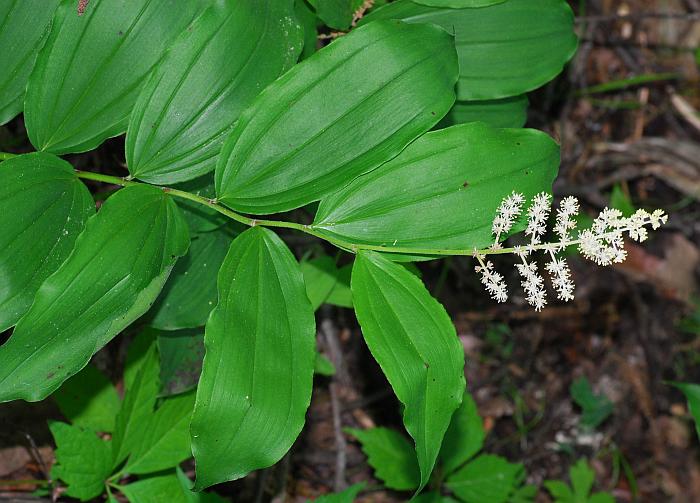Maianthemum racemosum (L.) Link
False Solomon's Seal

Native
CC = 4
CW = 3
MOC = 67
© SRTurner
Maianthemum racemosum (L.) LinkFalse Solomon's Seal | |
 |
Native CC = 4 CW = 3 MOC = 67 |
© SRTurner |
|
Family - Liliaceae Habit - Perennial forb with long-creeping rhizomes. Stem - Arched, to 80 cm, unbranched, minutely pubescent.
Leaves - Alternate, simple, petiolate, spreading. Petioles 1-6 mm long. Blades 7-19 cm long, elliptic to ovate, the bases rounded, the tips acuminate, minutely pubescent on the undersurface, not glaucous, the 3-5 main veins forming ridges (more pronounced when fresh).
Inflorescences - Panicles of 50-250 flowers. Flowers with stalks 0.5-1.0 mm long,
Flowers - Perianth spreading, the sepals and petals free, narrowly ovate, white to yellowish white. Stamens 6, free. Style 1, short, the stigma shallowly 3-lobed. Ovary superior, with 3 locules, each with usually 2 ovules.
Fruits - Berries 4-6 mm long, globose to shallowly 3-lobed, red at maturity, sometimes with purple spots.
Flowering - May - June. Habitat - Mesic and bottomland forests. Origin - Native to the U.S. Lookalikes - None when flowering. Vegetatively, the plant resembles M. stellatum and Polygonatum biflorum. Other info. - This species is found across most of Missouri, as well as the eastern half of the continental U.S. and Canada. It is uncommon or absent in the far southern regions of the country. Photographs taken at Weldon Spring Conservation Area, St. Charles County, MO, 5-06-2012; Klondike County Park, St. Charles County, MO, 5-12-2014; Meramec State Park, Franklin County, MO, 5-07-2019; Poison Hollow, Howell County, MO, 5-14-2019; Bootleg Access, Washington County, MO, 6-29-2022, and Glassberg Conservation Area, Jefferson County, MO, 6-26-2023 (SRTurner). |